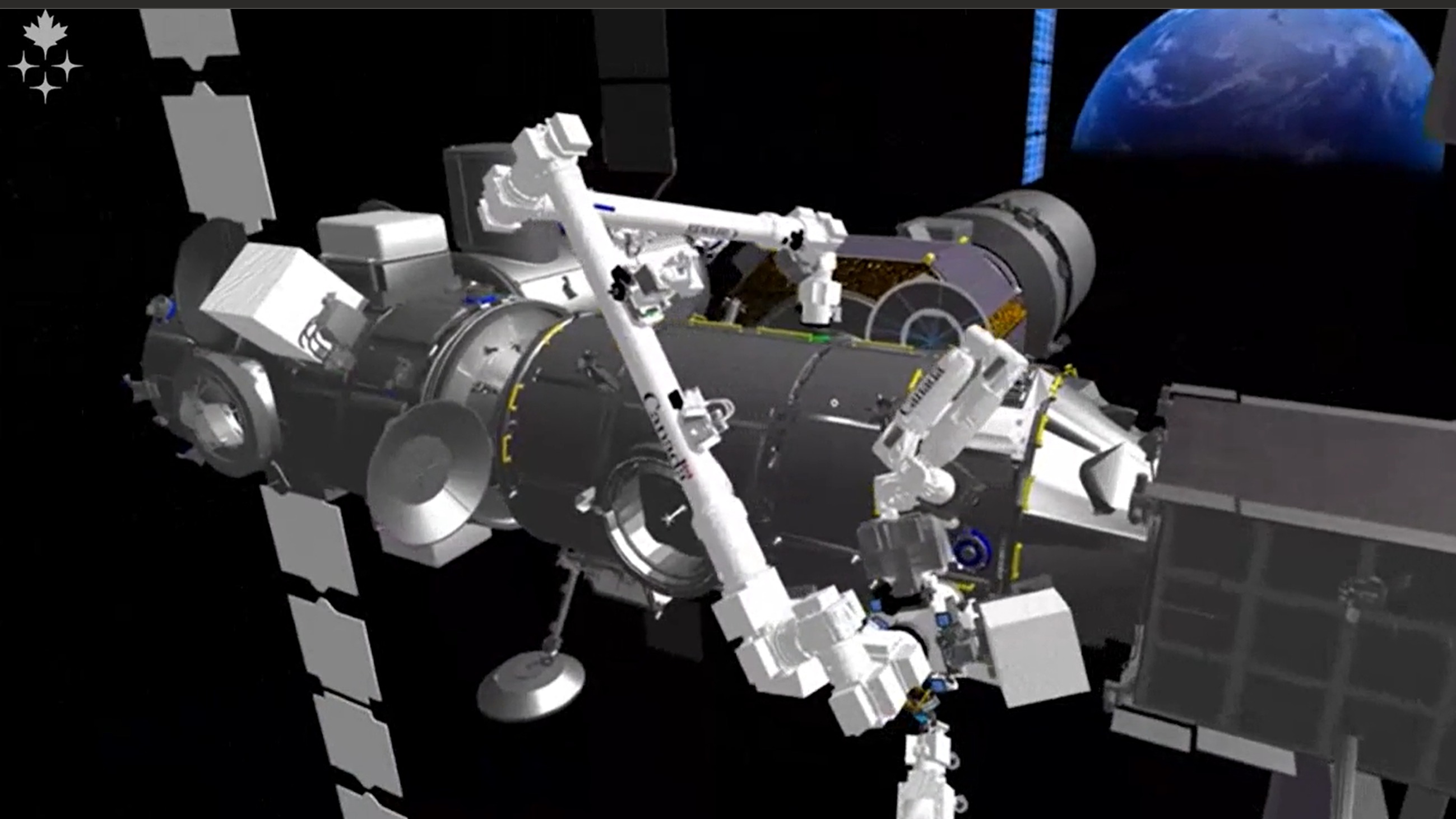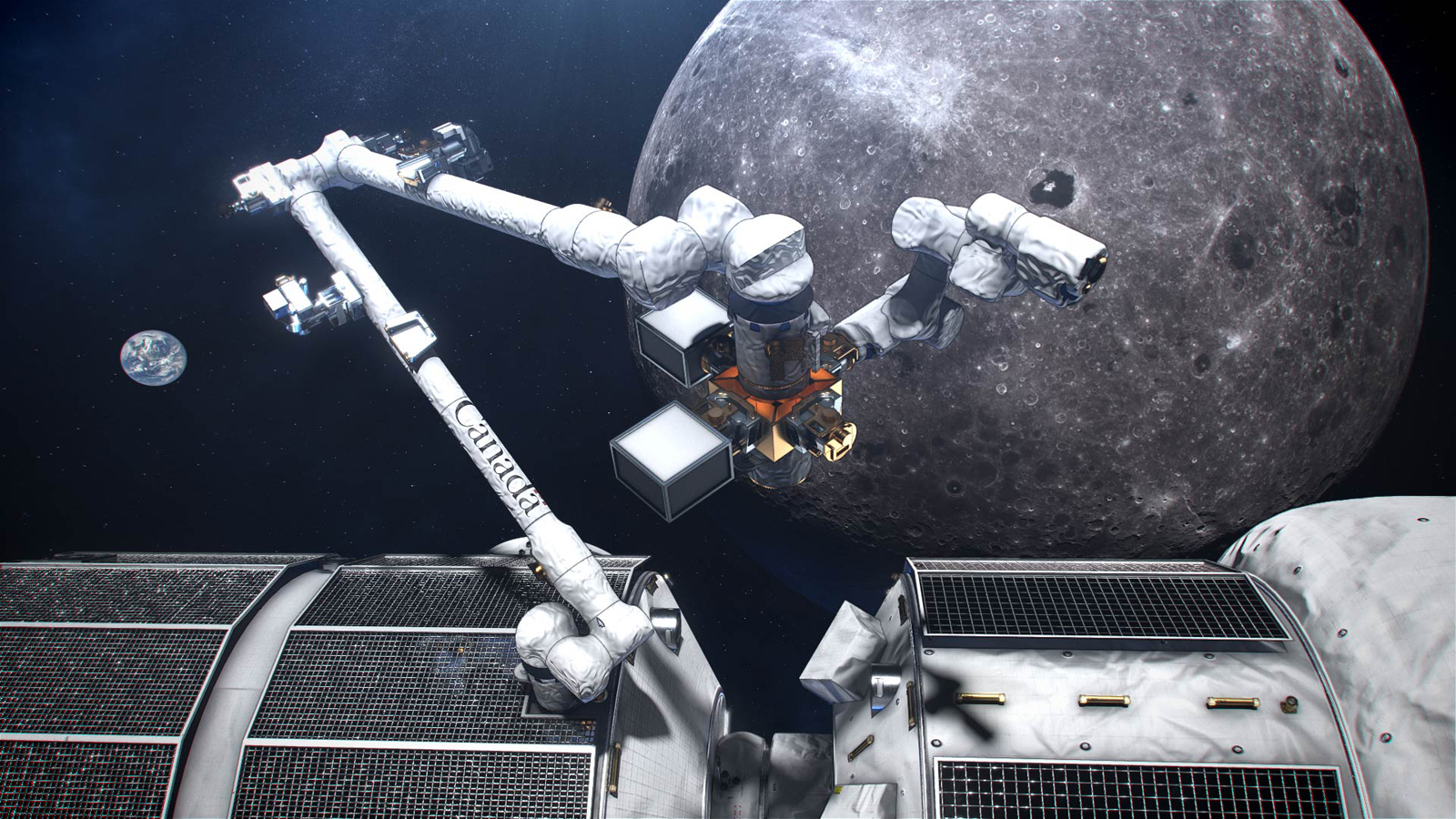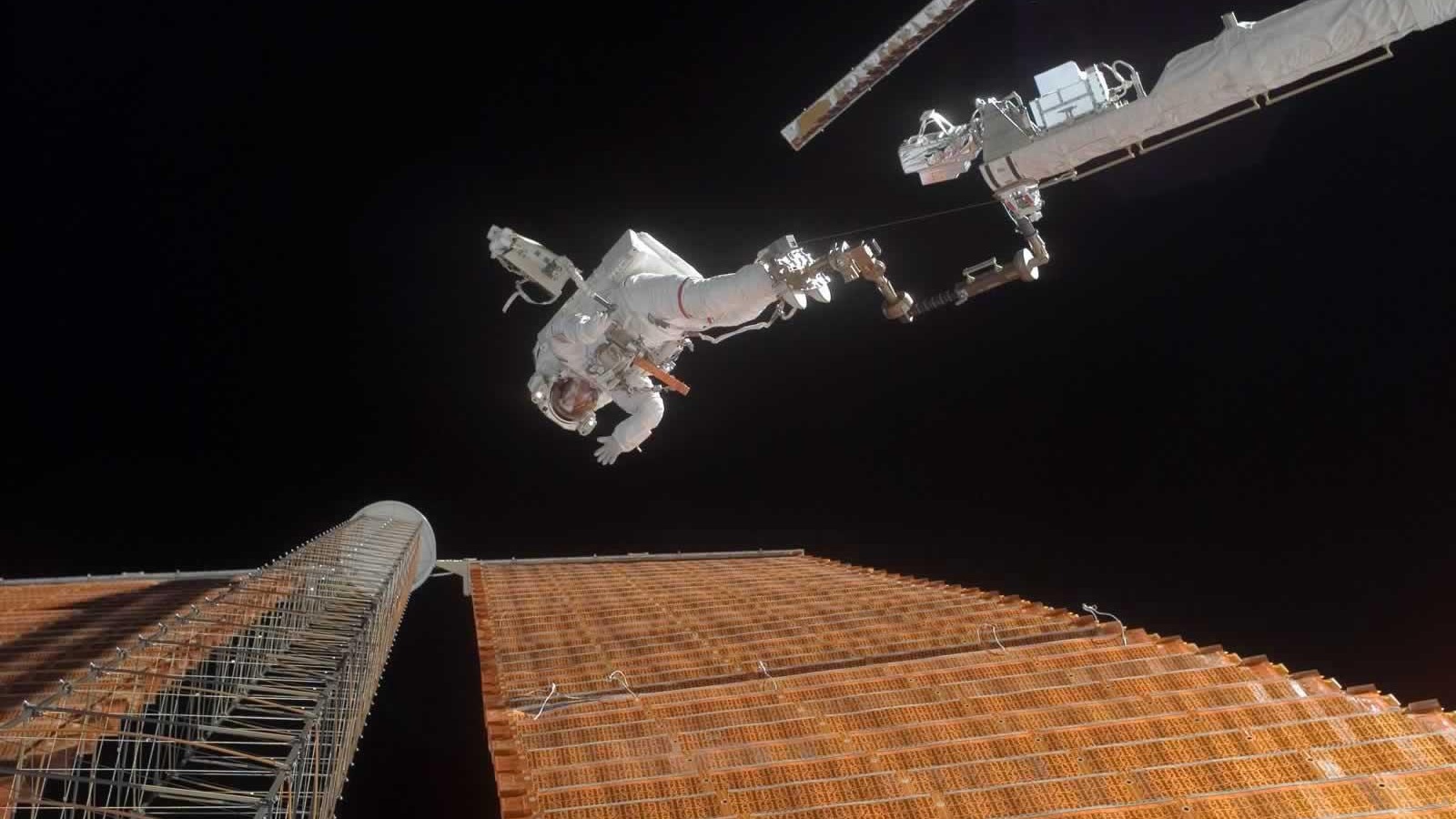Here's what it's like taking a VR spacewalk with the Canadian Space Agency
"When we were looking at Canadarm3, a lot of my questions were straight from the hip."

MONTREAL, CANADA — My moonwalk was missing the most important thing.
I, untrained as a spacewalking astronaut, felt literally lost in space as I fumbled around NASA's Gateway station circling the moon. I could see the Earth. Canadarm3 was doing its robotic arm thing right in front of me. I could even peek inside the empty crew modules.
Then I finally looked down. There it was. Craters. Lumpy shadows. Goosebumps. The moon in the closeness I had wanted to see since I was a child. Though simulated, the sensation of looking and exploring around it felt so real.
Flying jetpack-style around Gateway for about 30 minutes took nothing more than joysticks attached to a standard Meta Quest virtual reality (VR) headset. Dropping into space on the back of this tech only took moments during a media day at the Canadian Space Agency (CSA) to advertise Artemis 2, a round-the-moon mission with astronaut Jeremy Hansen slated for 2025.
The VR is so powerful and accurate that astronauts may one day train on it, the CSA told me. For now, though, the scale model on Gateway is helping make Canadarm3 the right size, shape and fit for keeping the space station going with robot power.
Related: This Artemis 2 tour showed me the 'Canadian genius' aiding NASA's next moon mission
Canadarm technology is so famous in Canada that it graces our $5 bill. We've had two space robot arm generations so far since the 1970s; Canadarm3 maker MDA says the third will fly to Gateway as soon as 2028 if the orbiting complex is ready. Robots not only keep space programs going, but also fund Canada's missions — astronauts and space station science alike. So it's a virtuous circle.
Breaking space news, the latest updates on rocket launches, skywatching events and more!
After decades of helping to berth ships, move around astronauts and equipment and even do the odd solar array repair, Canadarm's work will leave low Earth orbit to help NASA build out its Artemis program for moon astronauts. The mighty robot series has been called the "potato salad" of the space program: The unforgettable side dish that, like the rug in "The Big Lebowski," ties the room together.
Canadarm3 will be equipped with artificial intelligence and, properly speaking, it's not just a single arm. There's the main arm tasked with the big salad items: An eight-jointed spider-like being that can walk hand over hand on Gateway for repairs. A detachable small arm like CSA's Dextre "handy robot" can do finer work, like setting up experiments. The set even comes with a backpack, the CSA's Ken Podwalski told me as we sat beside the simulator.
Podwalski, a self-described "dinosaur" who has made Canadarm work his career for decades, is now executive director for the Lunar Gateway program at the CSA. He uses the prehistoric term with affection and awe, by the way.
Unlike Podwalski, the 20-something Gen Z engineers showing us around the VR environment didn't have to use paper drawings — or dress up in protective "bunny suits" in clean rooms while walking around space modules — just to make sure the robot arm wouldn't brush against a critical bit during its crawl.
That's especially crucial when the big arm on Canadarm3 is carrying things, like its backpack or "toolkit." Like a tool caddy, it has slots allowing astronauts or the small arm to mount experiments — or to tote along wrenches and such for spacewalks.
"It also allows us to be able to configure payloads," Podwalski told me. "So if we have a vehicle that arrives at Gateway and brings up a new experiment platform, where we can pick that up instead of doing multiple trips, we can actually stack things into our backpack and load up our backpack with those payloads."
Related: Canada Joins NASA's Lunar Gateway Station Project with 'Canadarm3' Robotic Arm
Say a heliophysics or sun science experiment arrives on a cargo ship like SpaceX's. Scheduling astronaut time is "ridiculous" on ISS missions that have a roomy six months or more for crew time, Podwalski said. Gateway is even worse, as you might get 30 days if you're lucky.
To save on bugging the astronauts, the little arm could mount the experiment on the backpack. The big arm could "do the necessary choreography" of moving the sun sentinel to its assigned space station spot. Then as the big arm backs away to do something else, the little arm would again spring into action to add the experiment in just the right spot.
While the VR environment shows the current Gateway configuration, including showing all the perches for Canadarm3 in their right spots, Podwalski emphasized it's important to bring in training and real-world experience as well when firming up the arm's design. Luckily, Canadarm2 and Dextre have been pairing up on complex tasks for many years, but the next generation of robots can and should reach farther.
"When we were looking at Canadarm3, a lot of my questions were straight from the hip: How are we actually going to be able to manage that kind of range of motion, when you've got this kind of interference, or when you've got all this crowded stuff around the outside of the Gateway? Questioning the length of the (big) arm, questioning the topology of the small arm and all this kind of stuff."
Questions from people like Podwalski and long-time Canadarm supplier MDA will be crucial to keep things working far beyond Earth, on robotics billed on their reliability closer to home. Even better, Podwalski pointed to an "intuition" among the team members (who have known each other for decades as well) that will be crucial in making Canadarm3 ready for challenges we can't even predict.
"It's actually one of the things that we test, when we bring crew and mission planners and flight controllers and human flight directors and whatnot" to the CSA, carving valuable weeks out of a schedule to get them comfortable training with an arm simulator on Earth. "We bring them here to make sure that (flexibility) gets built into their thinking, because that is how the operations happen. That has to be there, right?"
VR, he added, will be "one of the many tools" that will be used to get engineers or crew ready for Canadarm3 operations, in some cases allowing them to train together without the need of flying to Montreal. "The idea is to really set up a training environment where we can develop our own resources, to develop whoever we need to give a success, and do that in the most efficient way possible."
While you're waiting for your chance to fly into space, it could be worth your time to check out our guides to the latest VR headset deals and best free VR experiences.

Elizabeth Howell (she/her), Ph.D., was a staff writer in the spaceflight channel between 2022 and 2024 specializing in Canadian space news. She was contributing writer for Space.com for 10 years from 2012 to 2024. Elizabeth's reporting includes multiple exclusives with the White House, leading world coverage about a lost-and-found space tomato on the International Space Station, witnessing five human spaceflight launches on two continents, flying parabolic, working inside a spacesuit, and participating in a simulated Mars mission. Her latest book, "Why Am I Taller?" (ECW Press, 2022) is co-written with astronaut Dave Williams.


